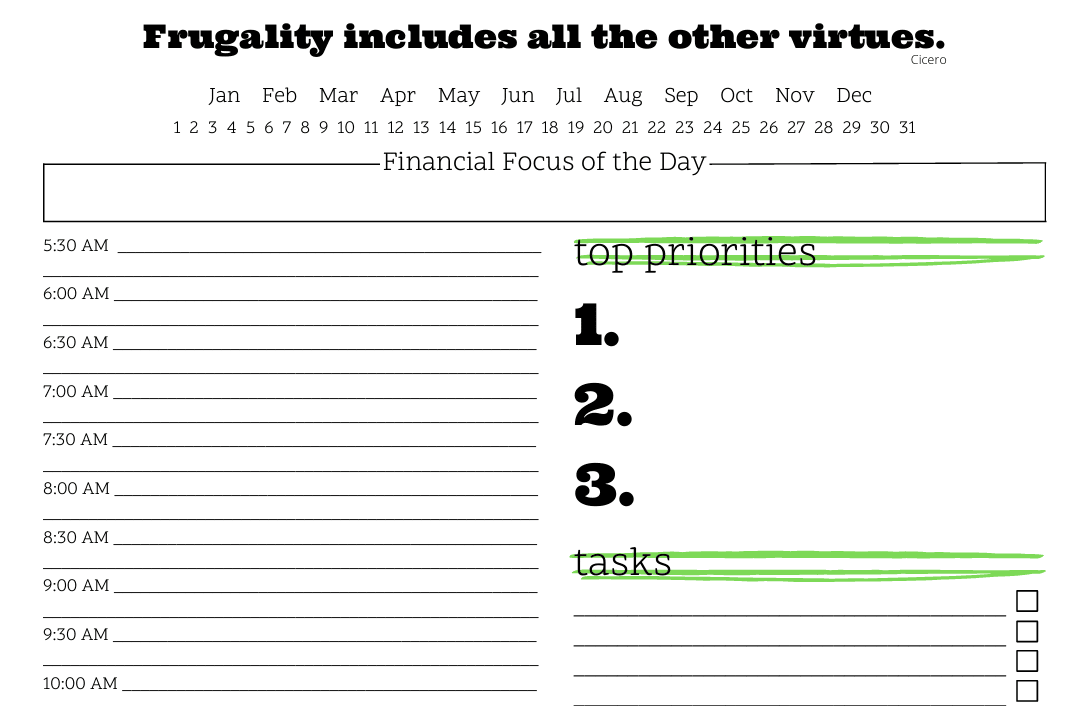This article may contain references to products or services from one or more of our advertisers or partners. We may receive compensation when you click on links to those products or services. Nonetheless, our opinions are our own.
The information presented in this article is accurate to the best of our knowledge at the time of publication. However, information is subject to change, and no guarantees are made about the continued accuracy or completeness of this content after its publication date.
- Economic Indicators the Federal Reserve Monitors Before Cutting Interest Rates
- 1. Core Inflation Metrics
- 2. Labor Market Conditions
- 3. Consumer Spending Behavior
- 4. Housing Market Trends
- 5. Business Investment and Manufacturing Output
- 6. GDP Growth
- 7. Consumer Confidence and Sentiment Indexes
- 8. Global Economic Developments
- Preparing for a Potential Shift in Monetary Policy
- Conclusion
- Frequently Asked Questions
- Why does the Federal Reserve cut interest rates?
- How does the Fed decide when to cut interest rates?
- What are the core inflation metrics the Fed looks at?
- How does the Fed’s decision to cut rates affect consumers?
- Can global economic events affect the Fed’s decision to cut rates?
- How can I prepare for a potential interest rate cut?
- How often does the Federal Reserve meet to review economic conditions?
- Recommended Reads
Economic Indicators the Federal Reserve Monitors Before Cutting Interest Rates
The Federal Reserve’s choices about interest rates affect the whole financial system, from how much people can borrow to how people feel about investing. Before lowering interest rates, the Fed carefully looks at a number of economic indicators and compares them to its two main goals: keeping prices stable and creating as many jobs as possible. These indicators can help you understand how monetary policy might change as the economy changes. When the Fed thinks about lowering interest rates, these are the eight main indicators they look at.
1. Core Inflation Metrics
Why Inflation Data Matters
Inflation stands as a central factor in monetary policy decisions. The Fed primarily tracks:
- Core Consumer Price Index: Measures the average change in prices, excluding food and energy.
- Core Personal Consumption Expenditures Index: Considered the Fed’s preferred gauge, offering a more comprehensive view of household spending patterns.
If inflation rates fall below the Fed’s long-term target of about 2%, it might mean that monetary conditions need to be loosened to boost demand.
2. Labor Market Conditions
Employment as a Measure of Economic Health
Labor statistics serve as foundational indicators of economic momentum. The Fed examines:
- Unemployment Rate: A rising rate may point to economic stagnation, justifying interest rate reductions.
- Job Openings and Labor Turnover Survey: High vacancies with slowing hires may indicate hesitancy in the job market.
- Wage Growth: Accelerating wages can reflect either healthy demand or inflationary pressure.
These factors provide a nuanced assessment of the potential increase in labor market slack, a condition frequently associated with accommodative policy.
3. Consumer Spending Behavior
Tracking Household Confidence Through Expenditure
Consumer spending accounts for approximately two-thirds of U.S. GDP. The Fed monitors shifts in:
- Retail Sales Data
- Credit Card Usage
- Personal Savings Rate
A pullback in discretionary spending, especially when accompanied by higher savings or declining retail figures, may signal caution among households, prompting supportive monetary action.
4. Housing Market Trends
Real Estate Activity as a Barometer of Financial Conditions
The housing sector is highly sensitive to interest rates and provides insight into consumer sentiment, credit availability, and broader economic stability.
Important Metrics Include:
- Housing Starts: Indicative of future construction activity.
- Home Price Indexes: Rapid price growth can reflect constrained supply or speculative activity.
- Mortgage Rates: Low rates generally stimulate home buying.
- Inventory Levels: Tight inventories combined with rising prices may create affordability issues.
Sustained weakness in housing may lead the Fed to lower rates in order to encourage lending and home purchases.
Voted "Best Overall Budgeting App" by Forbes and WSJ
Monarch Money helps you budget, track spending, set goals, and plan your financial future—all in one app.
Get 50% OFF your first year with code MONARCHVIP
5. Business Investment and Manufacturing Output
Assessing Private Sector Momentum
Investment by businesses into infrastructure, equipment, and technology is another determinant of economic vitality. Indicators under review:
- Capital Expenditures
- Industrial Production Index
- ISM Manufacturing PMI
A softening in manufacturing or capital spending may reflect uncertainty, which can influence the Fed to adopt a more accommodative stance.
6. GDP Growth
The Broader Economic Pulse
Gross Domestic Product captures the aggregate value of all goods and services produced. A marked deceleration in GDP growth may justify interest rate cuts to invigorate demand. Recent trends suggest that while growth remains positive, pressures from global uncertainty and weakening sectors could weigh on expansion, increasing the likelihood of easing measures.
7. Consumer Confidence and Sentiment Indexes
Forward-Looking Indicators of Spending Propensity
Including the Consumer Confidence Index and the University of Michigan Consumer Sentiment Index, provide insights into household behavior. High confidence usually means high spending, while low sentiment may mean that people are cutting back. Even though these psychological measures don’t always predict the future, they have a big impact on policy decisions, especially when they are used with hard data.
8. Global Economic Developments
External Risks and International Pressures
The interconnectedness of modern markets means that global conditions can impact U.S. policy decisions. The Fed watches:
- International GDP Trends
- Central Bank Actions Abroad
- Commodity Markets
- Geopolitical Events
Supply chain constraints, geopolitical tension, or decelerating growth in major economies like China or the Eurozone can trigger spillover effects that justify domestic rate adjustments.
Preparing for a Potential Shift in Monetary Policy
Strategic Financial Positioning
In anticipation of a more accommodative rate environment, prudent financial behavior includes:
- Reviewing and refinancing existing debt to lock in better terms
- Building liquidity buffers to seize lower borrowing opportunities
- Rebalancing investment portfolios to account for yield compression in fixed income instruments
Staying attuned to the Fed’s language, particularly in speeches and post-meeting statements, offers useful signals as to whether a rate cut is likely.
Conclusion
Anyone who is involved in financial planning, investing, or business strategy needs to know how the Federal Reserve makes decisions before lowering interest rates. The Fed doesn’t just look at one number to make decisions; it looks at a wide range of economic indicators that together give a full picture of the economy. Important things that affect monetary policy decisions include inflation data, the state of the labor market, consumer spending, and changes in the global economy. The Fed might think about lowering interest rates to boost economic activity when inflation is under control, the job market is weak, and consumer confidence is low. If you’re getting ready for a possible change in monetary policy, it’s important to keep an eye on these signs and change your financial plans as needed. If you know these trends, you can lower your risks and take advantage of opportunities in a low-interest rate environment by refinancing debt, changing your investments, or getting ready for possible economic slowdowns.
Frequently Asked Questions
Why does the Federal Reserve cut interest rates?
The Federal Reserve cuts interest rates primarily to stimulate economic growth. Lower rates make borrowing cheaper, encouraging spending and investment. It is typically done when inflation is low, the economy shows signs of slowing down, or unemployment is rising.
How does the Fed decide when to cut interest rates?
The Fed closely monitors a range of economic indicators, including inflation rates, employment data, consumer spending, GDP growth, and global economic conditions. These factors provide a comprehensive picture of economic health and influence the decision to lower rates.
What are the core inflation metrics the Fed looks at?
The two core inflation metrics the Fed closely tracks are the Core Consumer Price Index and the Core Personal Consumption Expenditures Index. These indicators measure price changes while excluding volatile food and energy prices, giving a clearer picture of underlying inflation trends.
How does the Fed’s decision to cut rates affect consumers?
When the Fed cuts interest rates, consumers typically benefit from lower borrowing costs, such as reduced mortgage rates, car loans, and credit card interest rates. This can encourage spending and investment, which may help boost the economy.
Can global economic events affect the Fed’s decision to cut rates?
Yes, the Fed considers global economic developments when making policy decisions. Events like geopolitical tensions, international trade disruptions, or economic slowdowns in major economies can influence U.S. economic performance and the Fed’s rate decisions.
How can I prepare for a potential interest rate cut?
To prepare for a rate cut, consider refinancing any variable-rate loans to lock in lower rates, building up liquidity reserves to take advantage of cheaper borrowing opportunities, and reviewing your investment portfolio to account for potential changes in the yield of fixed-income assets.
How often does the Federal Reserve meet to review economic conditions?
The Federal Reserve holds regular meetings throughout the year, typically eight times annually, to review economic conditions and make decisions about monetary policy, including interest rates. They also issue statements after each meeting, providing insights into their outlook for the economy.

Reviewed and edited by Albert Fang.
See a typo or want to suggest an edit/revision to the content? Use the contact us form to provide feedback.
At FangWallet, we value editorial integrity and open collaboration in curating quality content for readers to enjoy. Much appreciated for the assist.
Did you like our article and find it insightful? We encourage sharing the article link with family and friends to benefit as well - better yet, sharing on social media. Thank you for the support! 🍉
Article Title: 8 Economic Indicators the Fed Is Watching Before It Cuts Rates
https://fangwallet.com/2025/10/20/8-economic-indicators-the-fed-is-watching-before-it-cuts-rates/The FangWallet Promise
FangWallet is an editorially independent resource - founded on breaking down challenging financial concepts for anyone to understand since 2014. While we adhere to editorial integrity, note that this post may contain references to products from our partners.
The FangWallet promise is always to have your best interest in mind and be transparent and honest about the financial picture.
Become an Insider

Subscribe to get a free daily budget planner printable to help get your money on track!
Make passive money the right way. No spam.
Editorial Disclaimer: The editorial content on this page is not provided by any of the companies mentioned. The opinions expressed here are the author's alone.
The content of this website is for informational purposes only and does not represent investment advice, or an offer or solicitation to buy or sell any security, investment, or product. Investors are encouraged to do their own due diligence, and, if necessary, consult professional advising before making any investment decisions. Investing involves a high degree of risk, and financial losses may occur including the potential loss of principal.
Source Citation References:
+ Inspo
Wang, Y. (2024). The Potential Relationship Between the Fed's Rate Cut and the Global Economy. Financial Economics Research, 1(2), 29-40.












































